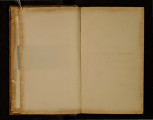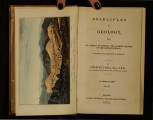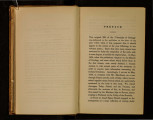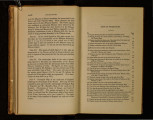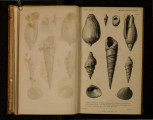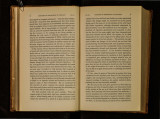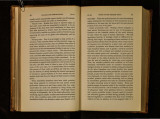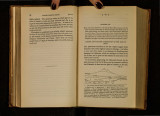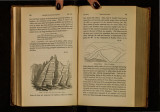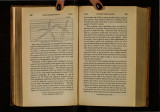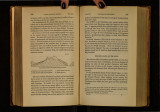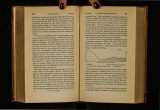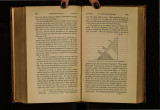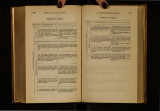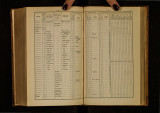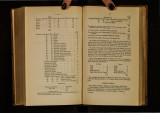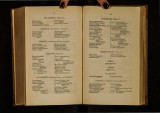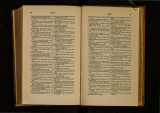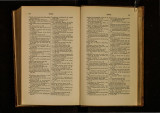| OCR Text |
Show 186 OLDER PLIOCENE PERIOD. [Ch. XIV. map. The greatest number of perfect c~nes are in the imm~diate neighbourhood of Olot, some of winch ar~ represented m the frontispiece, and the level plain on wluch that town stands has clearly been produced by the flowing down of many lava-streams from those hills into the bottom of a valley, probably once of considerable depth like those of the surround-ing country. In the frontispiece an attempt is made to represent by colours the different geological formations of which the country is composed. The blue line of. mountains in the distance are the Pyrenees, which are to the north of the spectator, and consist of primary and ancient secondary rocks. In front of these are the secondary formations described in this chapter, coloured grey. Different shades of this colour are introduced, to express various distances. The flank of the hill, in the foreground, called Costa de Pujou, is composed partly of secondary rocks and partly of volcanic, the red colour expressing lava and sconre. The Fluvia, which passes near the town of Olot, has only cut to the depth of forty feet through the lavas of the plain before mentioned. The heel of the river is hard basalt, and at the bridge of Santa Madalena, are seen two distinct lavacurrents, one above the other, separated by a horizontal bed of scorioo eight feet thick. In one place, to the south of Olot, the even surface of the plain is broken by a mound of lava, called the ' Bosque de Tosca,' the upper part of which is scoriaceous, and covered with enormous heaps of fragments of basalt more or less porous. Between the numerous hummocks thus formed, are deep cavities, having the appearance of small craters. The whole precisely resembles some of the modern currents of Etna, or that of Come, near Clermont, the last of which, like the Bosque de Tosca, supports only a scanty vegetation. Most of the Catalonian volcanos are as entire as those in the neighbourhood of Naples, or on the flanks of Etna. One of these, figured in the frontispiece, called Montsacopa, is of a Ch. XIV.] VOLCANOS OF CATALONIA. 187 very regular form, and has a circular depression or crater at the summit. It is chiefly made up of red scorire, undistinguishable from that of the minor cones of Etna. 'l'he neighbouring hills of Olivet and Garrinada, also figured in the frontispiece, are of similar composition and shape. The largest crater of the whole district occurs farther to the east of Olot, and is called Santa :Margarita. It is 455 feet deep, and about a mile in circumference. Like Astroni, near Naples, it is richly covered with wood, wherein game of various kinds abound. Although the volcanos of Catalonia have broken out through sandstone, shale, and limestone, as have those of the Eifel, in Germany, to be described in the sequel, there is a remarkable difference in the nature of the ejections composing the cones in these two regions. In the Eifel, the quantity of pieces of sandstone and shale thrown out from the vents, is often so immense as far to exceed in volume the scorire, pumice, and lava ; but I sought in vain in the cones near Olot for a single fragment of any extraneous rock, and Don Francisco Bolos informs me that he has never been able to detect any. Volcanic sand and ashes are not confined to the cones, but have been sometimes scattered by the wind over the country, and drifted into narrow valleys, as is seen between Olot and Cellent, where the annexed section is exposed. The light cindery volcanic matter rests in thin regular layers, just as it alighted on the slope formed by the solid conglomerate. No flood could have passed through No.44. a, Secondary conglomerate. b, Thin seams of volcanic sand and scorire. the valley since the scorire fell, or these would have been for the most part removed. The currents of lava in Catalonia, like those of Auvergne, the Vivarais, Iceland, and all mountainous countries, are of considerable depth in narrow defiles, but spread out into com- |




